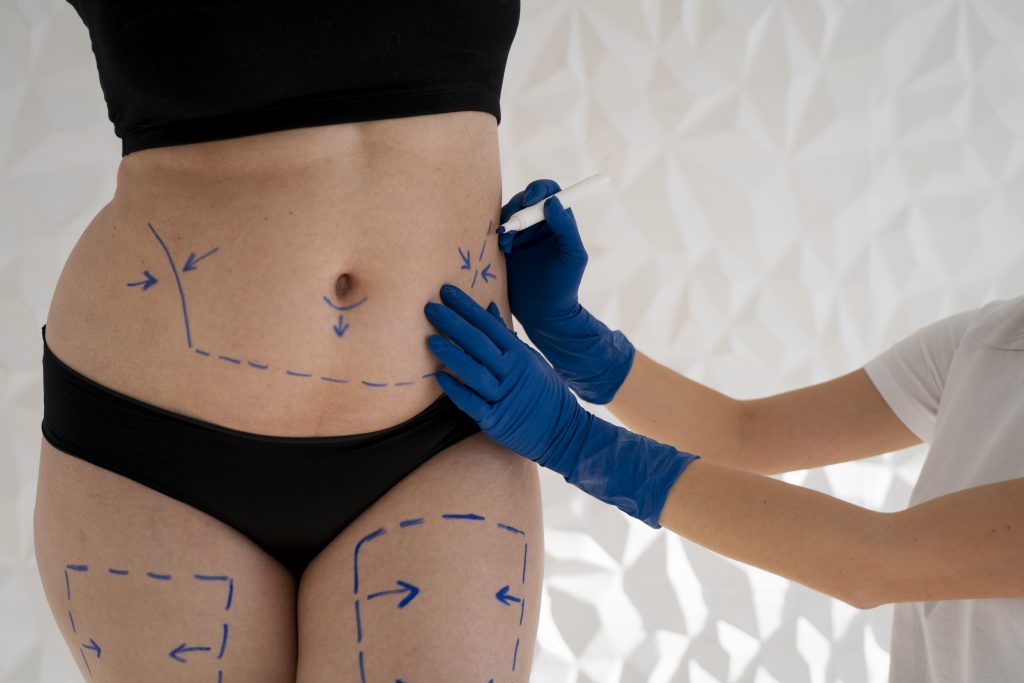
Laser liposuction and traditional liposuction are both popular procedures used to remove excess fat from specific areas of the body. While they share the goal of body contouring, there are some key differences between the two techniques. Here’s a comparison of laser liposuction and traditional liposuction:
- Methodology: Traditional Liposuction: In traditional liposuction, a surgeon manually breaks up and suctions out fat cells using a cannula, a thin tube inserted through small incisions in the skin.
Laser Liposuction: Laser liposuction, also known as laser-assisted liposuction or SmartLipo, involves the use of laser energy to melt and liquefy fat cells before they are suctioned out. The laser is used to target and disrupt fat cells, making them easier to remove.
- Fat Removal Technique: Traditional Liposuction: Traditional liposuction primarily relies on physical manipulation and suction to remove fat cells. It requires the surgeon to manually break up the fat deposits and suction them out.
Laser Liposuction: Laser liposuction combines laser energy with suction. The laser is used to heat and liquefy the fat cells, making them easier to remove through suction. The laser also helps tighten the surrounding skin by stimulating collagen production.
- Anesthesia: Traditional Liposuction: Traditional liposuction is usually performed under general anesthesia, which means the patient is completely unconscious during the procedure.
Laser Liposuction: Laser liposuction can be performed under local anesthesia or with mild sedation. Since laser liposuction is less invasive and causes less trauma to the tissue, it often allows for a quicker recovery and less discomfort.
- Recovery Time: Traditional Liposuction: Recovery from traditional liposuction can take several weeks. Swelling, bruising, and discomfort are common, and patients may need to wear compression garments during the healing process.
Laser Liposuction: Laser liposuction typically has a shorter recovery time compared to traditional liposuction. Patients may experience less swelling and discomfort, and the use of laser energy can help stimulate collagen production and promote skin tightening.
- Precision and Skin Tightening: Traditional Liposuction: Traditional liposuction focuses primarily on fat removal and may not have as much precision when it comes to sculpting and contouring. It does not have a direct effect on skin tightening.
Laser Liposuction: Laser liposuction offers better precision and control due to the ability to target specific areas with laser energy. The laser’s heat stimulates collagen production, resulting in some degree of skin tightening, which can help improve the overall contour and appearance of the treated area.
- Suitability for Different Areas: Traditional Liposuction: Traditional liposuction can be performed on various body areas, including the abdomen, hips, thighs, arms, back, and neck.
Laser Liposuction: Laser liposuction is commonly used for smaller areas, such as the chin, neck, and face. It is also effective for contouring delicate areas like the arms, knees, and ankles.
Both traditional liposuction and laser liposuction have their advantages and considerations. The choice between the two depends on factors such as the patient’s specific needs, the area to be treated, desired results, and the surgeon’s recommendation. It’s crucial to consult with a qualified healthcare professional or plastic surgeon to determine the most suitable approach for your individual case.
